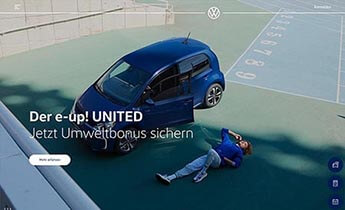Case Study LVM

UX Management Workshops
Integrating UX in development processes, improving collaboration- UX Management
- Workshops
- RACI matrix

The Agricultural Insurance Association Münster a. G. (German: LVM Landwirtschaftlicher Versicherungsverein Münster) is one of the leading insurance companies and one of the ten largest motor vehicle insurers in Germany. „From farmers for farmers“– that was the initial idea when farmers founded the “Liability Insurance Association for Farmers in the Province of Westphalia”.
Today LVM is still an insurance association. What makes it special is that every LVM-insured person is also a member of LVM. There are no third-party owners – as is the case with a stock corporation. This concept that customers are more than consumers is also evident in LVM's user-centered work.
UX and software development
The topic user experience has gained importance at LVM throughout the recent years and experts for usability and user experience were hired. However, in the collaboration with different departments of the software development it became evident that the responsibilities of UX designers and software development are overlapping. In some cases, responsibilities were not clearly defined, which led to problems over the course of the project. Instead of prescribing a solution, all participants were asked to participate in finding a common solution for collaboration.
The key topics of the project were:
- Developing an understanding for one’s own responsibility and tasks as well as the skills of other team members.
- Developing a common understanding for usability and user experience.
- Defining tasks and responsibilities for different roles and types of projects.
These key topics belong to the field of UX management. They concern the components team, processes, and structures – more precisely, integrating a new UX team's activities into existing development structures.
User-centered success
The user-centered way of thinking and working is also applicable for these kinds of projects. After a preliminary talk with the head of the department we conducted interviews with employees from different divisions (UX experts, software developers, project managers) to gain insights into their understanding of their roles, into work processes, cooperation, responsibilities, understanding of UX, expectations and wishes.
It became clear that there were some aspects that all participants agreed on and others that were perceived very differently. Those findings provided us with an excellent basis for preparing and planning the two-day workshop. Contents of the workshop were:
- Group building activities: Besides working on the topic it was important to us to create a group spirit. That is why we conducted different smaller group activities. We also aimed to raise awareness for group-dynamic behavior and point out how the group currently functions as a team.
- Developing an understanding for usability and user experience: It became apparent that there was no convergent vocabulary for usability and user experience. Different participants spoke of “making usability” but meant different things.
- Process visualization: Definition and visualization of the current development process, i.e. which tasks and work steps do the workshop participants currently perform in the development process. It was revealed that in some cases several employees felt responsible for the same tasks.
- RACI method: Definition and specification of the collaboration and responsibilities using the RACI method.

RACI method
The RACI matrix clearly defines and shows:
- What is the task to be done?
- Who is involved?
- Who is responsible?

As a basis, a list of tasks is used, ideally in chronological order. The list is then complemented with roles or persons who carry out these tasks or are responsible for them (e.g. project manager, software developer). This results in a matrix of tasks and roles, in which the various responsibilities are defined:
R – Responsible
This person is responsible for the execution.
A – Accountable
This person decides on the result of the task. He or she can delegate the executive responsibility to R.
C – Consulted
This person must be involved in an advising function.
I – Informed
The person receives information about the result of the task. He or she is informed.
Additionally, we introduced:
S – Support
Supports the responsible (R) person with the execution. As differentiation to Consulted we defined that Consulted provides essential input, but the supporting person helps to get the job done.
What we achieved
Of course, after two days of workshops, not all problems in the collaboration have vanished. However, the intensive exploration of each team members' tasks and responsibilities led to a better understanding of each other’s expertise and tasks. Furthermore, the RACI Matrix provides a reference that can be consulted for any ambiguities in the future. The RACI Matrix is to be understood as a dynamic document and is continuously adapted.
Quotes from the workshop:
„It's good what we have achieved. I now understand the project manager's perspective better and have a deeper understanding of the group.“
„Everyone is valuable in their role.“
„It will not cover every situation but now we can find solutions collaboratively. We have understood better how everybody sees their role.”
How UX is your business?
Learn more about UX Management und start the UX maturity check, to find out how you can make your UX vision a reality!
More about UX Management
 Münster University of Applied Sciences: Inhouse-Training Personas
Münster University of Applied Sciences: Inhouse-Training Personas  Volkswagen AG: UX Strategy & Management
Volkswagen AG: UX Strategy & Management